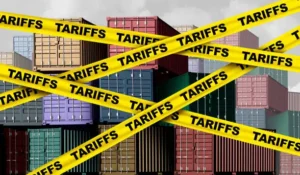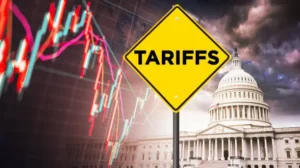In 2025, tariffs are hitting startups harder than ever. With growing trade tensions across regions, early-stage companies, especially those in tech, manufacturing, and green energy, are being pushed into a corner. For startups already operating on thin margins and limited funding, increased tariffs mean higher costs, tighter cash flow, and harder decisions. While tariffs aim to protect domestic industries, their ripple effects are undermining the very ecosystem that fuels innovation and economic growth.
Understanding the Impact of Tariffs on Startups
Tariffs are essentially taxes placed on imports and exports, designed to encourage local production and reduce foreign dependency. But startups often rely on global supply chains, imported software tools, or international customers. As a result, these new trade barriers complicate operations, increase costs, and slow down growth.
Unlike larger companies, startups don’t have the buffers or back-up supply chains. According to the Wall Street Journal/Vistage Small Business CEO Confidence Index, over 53% of small business leaders in the U.S. report a negative impact on their business from tariffs in 2025
Insights from Business Insider reported that the effective U.S. tariff rate on goods surged to 10.1% in 2025, up from 2.4% in 2024, a massive jump that many startups simply weren’t prepared for.

Higher Costs, Slower Growth
Startups importing hardware, raw materials, or electronics face the first hit in price hikes. According to a 2025 report by Reuters, many components, especially semiconductors, chips, and batteries, have gone up by 10 to 25% due to new tariffs introduced in the U.S., Europe, and parts of Asia.
Startups are left with three unappealing choices:
- Absorb the cost, which squeezes already tight margins.
- Increase product prices, which risks losing customers.
- Delay launches to find alternative suppliers, slowing time-to-market.
Even digital-first companies aren’t spared. Due to new digital service tariffs, Many SaaS startups are now paying more for cross-border licensing, cloud hosting, or API access. What once seemed like a lean and scalable model now faces hidden global costs.
Funding Under Pressure
Tariffs also impact how investors evaluate startups. Venture capitalists are increasingly cautious, mainly when startups rely heavily on international suppliers or markets. According to Business insider, a business information provider, 34% of investors globally in 2025 flagged tariffs and trade tensions as a reason for delaying or pulling back funding from early-stage ventures. Startups trying to raise capital are now facing more scrutiny:
- Can they localize their supply chains?
- Will their profit margins survive rising costs?
- Are their projections realistic in today’s trade environment?
The result? Many promising startups find it harder to secure follow-on rounds, even with solid traction and product-market fit.

How Startups Are Adapting
Despite the challenges, founders are known for being resilient. Some startups are rethinking product designs to use fewer tariffed parts. Others are forming partnerships with local suppliers or nearshoring production.
There’s also a rise in B2B startups offering solutions specifically to handle the impact of tariffs, such as dynamic pricing software, AI-driven supply chain analytics, and sourcing intelligence platforms.
According to PitchBook, the number of startups offering “trade optimization” or “smart logistics” services grew by 17% year-over-year in Q1 2025. This shows how innovation often emerges in response to friction.
What Needs to Change
While startups are trying to adapt, systemic support is essential. Governments and trade bodies should consider:
- Temporary tariff relief for small and early-stage companies.
- Tax credits for local sourcing or manufacturing.
- Accelerated grants or subsidies for affected innovation sectors.
Policy reforms that balance national interests with startup resilience can go a long way in reducing the long-term impact of tariffs.
Final Thoughts
The impact of tariffs on startups in 2025 is real, complex, and growing. While some companies find ways to pivot, others face stalled growth, reduced investment, and rising uncertainty.
Startups have always been engines of innovation, but they can’t navigate this storm alone. Investors, trade officials, and partners must step in to ease the pressure. With collective action and strategic adaptation, startups can overcome the current wave and continue building a more connected and resilient global economy.
Navigating complex challenges like tariffs? Quickers helps founders stay agile with hands-on incubation, strategic guidance, and the proper intros right when it matters. Start your journey with us.
FAQs: The Impact of Tariffs on Startups in 2025
Q1: What are tariffs, and why are they increasing now?
A: Tariffs are taxes on imports/exports. They’ve increased in 2025 due to geopolitical tensions, economic protectionism, and the restructuring of global trade relationships.
Q2: Which startups are most affected?
A: Startups in manufacturing, hardware, cleantech, and even SaaS (via digital service tariffs) are facing rising costs and supply chain delays.
Q3: Why can’t startups switch suppliers?
A:Startups lack the scale and capital of larger companies, making it harder to renegotiate contracts or find local alternatives quickly.
Q4: How do tariffs affect startup funding?
A:Investors are becoming more risk-averse and are scrutinizing startup financials, supply chain dependencies, and global exposure more closely.
Q5: Are there any tools or services helping startups manage tariff challenges?
Yes. There’s growing demand for platforms offering dynamic pricing, trade optimization, and AI-based logistics analytics to help navigate these complexities.
Q6: Can government policy actually help?
A:Absolutely. Targeted relief programs, tax credits, and innovation grants could reduce the long-term damage of tariffs on small companies.
My name is Haris saleem and I am a Software Engineer.

